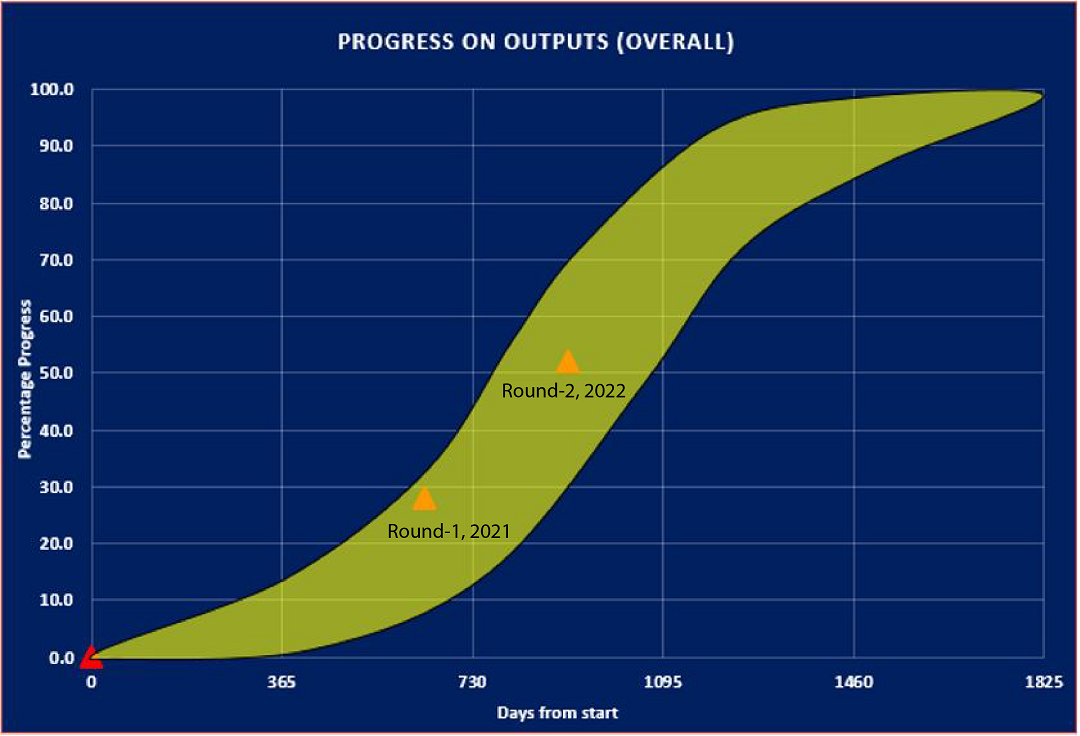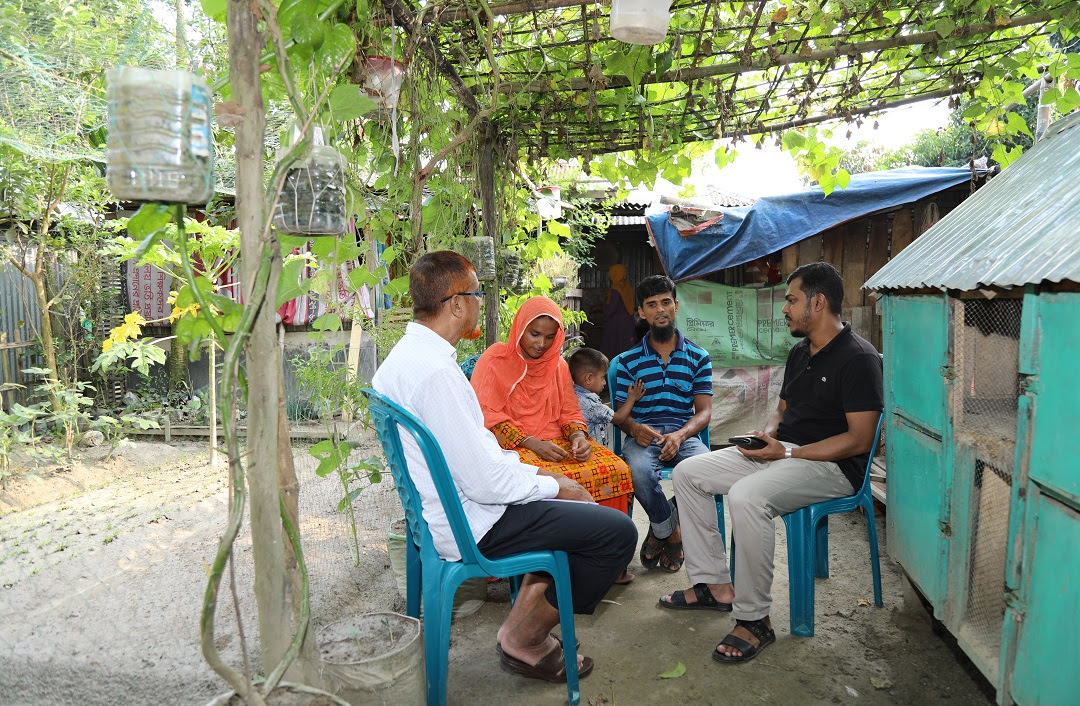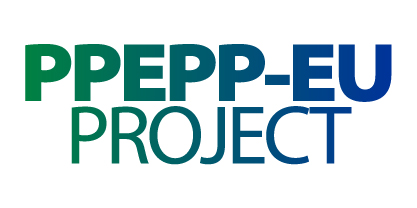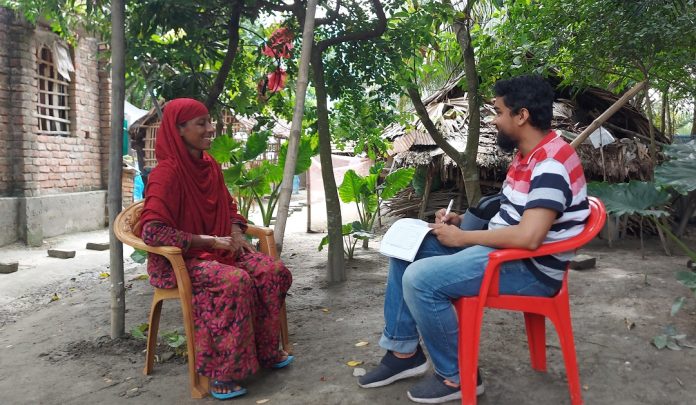Pathways to Prosperity for Extremely Poor People (PPEPP) project recently completed its second round of Results-Based Monitoring (RBM) to evaluate progress and results, identify any deviations from the project plan and constraints, and assess the efficiency and effectiveness of the inputs. The RBM used an Activity to Output Monitoring (ATOM) approach to measure progress towards target outputs by tracking time-based, cumulative progress for the six project components. The ATOM data were then combined and weighted at various levels to provide a progress for all components, partners, and working area, as well as an overall achievement for the project.
The project used the Relative Scales or Ladders method to measure outcome-level results. For impact-level result measurement, the RBM employed a composite score called the “Household Vulnerability Reduction Score (HVRS),” which is based on the “Household Pathway to Prosperity Score (HPPS)” and the “Household Nutrition and Food Security (HNFS)”. The HPPS score is determined by evaluating the household’s assets, while the HNFS is based on the household’s food security and nutrition status.
The PPEPP project used a survey questionnaire, developed based on the project’s results chain, to collect household data for outcome and impact-level results. The latest RBM surveyed over 4,000 households in 40 unions, and an earlier RBM in 2021 surveyed about 2,000 households in 20 unions. This article compares the progress starting from HH census to RBM round 1 to RBM round 2 of the project’s FCDO portion. To minimise errors, data collection was done using android-based smartphones/tablets and the Open Data Kit (ODK) platform.

Outcome-Level Results
The RBM evaluated the short-term impact or outcome of various project interventions, such as livelihood support, microfinance, and capacity development, on the lives and livelihoods of participating households. It focused on key indicators such as per capita household expenditure, savings behaviour, assets, and employment status. Additionally, the RBM assessed household dietary diversity, climate resilience, and women’s empowerment among project members.
Based on the information provided by the households, it appears that per capita household expenditure of participant households increased by 32% in the first round of the RBM compared to the PPEPP census held in 2019-2020. In the second round, it increased by 39% from round-1. The average household savings in the first round was BDT 2,431 and the median household savings was BDT 1,500, which was BDT 2,275 on average during the PPEPP household census. However, in the latest RBM, the average household savings was found to be BDT 6,882 and the median household savings was BDT 4,000, which is significantly higher than the previous data.
The first round of the RBM found that the saleable asset value of participant households increased by 45%, compared to their asset value during PPEPP HH census. The PPEPP census found that most of the target households were day labourers and most of them were dependent on a single source of income. However, after the first round of RBM, it was found that 35% of these households have been engaged in multiple sources of income. The second round of RBM found an even greater increase in saleable asset value, with a 50% increase from round-1. Additionally, the number of participant households with multiple sources of income has increased to 52%.

The second round of RBM outcome results show that around 52% households now exhibit equal participation of women in decision-making over regular expenditure, 49% in investment and 54% in child education. These are significant improvements compared with the first round results when these figures were 30%, 29% and 34% respectively.
The Household Dietary Diversity Score (HDDS) based on a 24-hour recall period and calculated on a 12-point scale using 12 food groups improved from 6.17 in the first round to 6.6 in the second round. Additionally, 37% of households adopted climate-resilient income-generating activities, which was a 12% increase from the first round. 85% of households have now adopted new technologies to implement these livelihoods activities (climate-smart farming, off-farm IGAs, etc.), resulting in increased household incomes compared to 82% in the first round.

Impact-Level Results
The PPEPP project aims to help households work their way out of extreme poverty and become more resilient and prosperous. The main indicators of impact for the project are:
a) The proportion of people exit from international poverty line; and
b) Prevalence of i) stunting, and ii) wasting reduced among U5 children
Results from the first round of RBM showed an increase in the average per capita monthly income of participant households, going from BDT 1,388 in 2019 to BDT 1,968 in 2021. Figure 2 compares the average per capita monthly income of PPEPP households between the two rounds of RBM.

The overall households were measured and categorised based on a metric called HPPS, which ranges from 0 to 1 where zero (0) means no change and 1 means the highest level of prosperity. The households were divided into three groups based on HPPS: vulnerable (HPPS below 0.3), transient (HPPS between 0.3 and 0.6), and progressive (HPPS above 0.6). According to the first round of RBM results, 17% of households were vulnerable, 73% were transient, and 10% were progressive. However, after three years of interventions, the distribution of households among these categories has changed to 5% vulnerable, 67% transient, and 28% progressive.

Md. Mashiur Rahman (Senior Programme Manager, PPEPP) and Md. Ehsanul Haque Tamal (Senior Programme Manager, PPEPP) contributed to this report.


